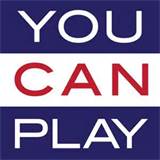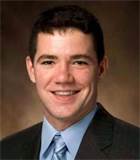Executive Summary
The You Can Play Project is a campaign dedicated to the extinction of homophobia on the field, in the locker room, and in the stands. This campaign works to create equal opportunity for athletes, no matter their sexual orientation, and encourages fans, players, and coaches to only look at an athlete’s skills, work ethic, and competitive spirit.
This campaign was started back on March 4, 2012 by Brian Burke, General Manager for the NHL Toronto Maple Leafs, and Patrick Burke, a scout for the NHL Philadelphia Flyers, for their son and brother, Brendan Burke.
Brendan Burke had openly come out in public on ESPN back in 2009 and has been shown discussing his sexuality and his father’s acceptance.
“I think it’s important my story is told to people because there are a lot of gay athletes out there
and gay people working in pro sports that deserve to know there are safe environments
where people are supportive regardless of your sexual orientation.”
Brendan Burke died on February 5, 2010 in a car crash. He was only 21 years old.
Today the campaign has created numerous videos of professional athletes and college students showing their pledge. You Can Play Project have a Twitter and Facebook account, where they have posted their videos and where the public can post their support for the cause and help create awareness.
For this White Paper, I am going to work off what the campaign has already done through social media and their website to make the cause more known to the public. There might be a gay athlete that isn’t aware that he or she has people on their side.
Strengths
|
Weaknesses
|
Opportunities
|
Threats
|
What can we do?
Because this Project has already made it a habit to constantly update their social media and website, there are a few other ways we can gain more support, awareness, and understanding of what this Project’s goals are within the Sport world.
Television:
In March 2012, the You Can Play Project launched their first Public Service Announcement called “The Faceoff.” It was uploaded to Youtube and aired during the Bruins-Rangers game on NBC.
After their first launch, more and more videos were created not just with the faces of professional hockey players, but college athletes began to take a stand, one including Miami University where Brendan Burke was a student manager for the Miami University Redhawks hockey team.
Even TSN Sport Center has been getting in on the campaign, pledging their fair and equal treatment to LGBT athletes as sport casters on one of the nation’s most popular sport channel.
Though only a few videos made it to a television slot, Youtube videos are uploaded as early as a week ago.
Connect:
There are various other campaigns similar to the You Can Play Project.
Women’s Sport Foundation works to help develop girl’s and women’s lives in sports and physical activities. They too stand for the fair and safe opportunities for LGBT athletes that participate in sports. Twitter: @WomensSportsFndn
The Last Closet is a campaign to end homophobia in men’s pro sports. They had recently contacted the Commissioners of the NFL, NBA, MLB, NHL, MLS to publicly speak about homophobia in sports, but all have kept quiet on the subject. Using a few statistics, The Last Closet aims to create role models, gay or straight, in the professional world of sports for younger athletes that are afraid of coming out. Twitter: @thelastcloset
These are just a few LGBT campaigns that strive for the same goals. To spread the word and join together could help create more awareness for equality for LGBT athletes in the locker room and on and off the field.
Social Events:
With the numerous support by groups like “You Can Play” and the support of professionally athletes, an event where they all come together with on common purpose. With the different groups and athletes, the PR will be through the roof. With big names helping to show that it’s a player’s talent, gay or straight, that matters in the end.
By making this event public, and maybe annual depending on the success, it will show those athletes that struggle with coming out to their team that there’s nothing to fear. No matter what one person says, there is a team of gay and straight people that support them because of their talents.
This event will educate both groups: the straight and gay public that supports coming out, and the ones that don’t. To have coaches, players, owners, and athletes that many people look up too as role models, it sends the message that even your heroes support this and it’s okay for you to do that too.
To replicate the way Franklin D. Roosevelt was able to spread the word of his New Deal, as explained in Stuart Ewen’s book PR! A social History of Spin, he reached so many people that both agreed and disagreed with his plan. With today’s modern technology that is constantly updating, to spread the word of You Can Play and the support of the athletes and coaches throughout the country should be cake.
Using Web 2.0:
Since “You Can Play” is already up to date in social media, constantly updating each one, the next stop is to really get the word out there. When they tweet or post on Facebook, they might have videos that sport teams have submitted showing their support. What the campaign needs to do is to get the real facts out there as well. Since the campaign is primarily surrounding hockey, they should interview gay hockey players that have come out to the public. Brendan Burke had only a few years to share his story before his death. To have hockey players, professional or collegiate, share their story personally through their YouTube account or through Facebook, it gets the truth out. It shows that good players aren’t determined by their sexuality but based on what ends up on the stats sheet at the end of the day.
According to Tom Kelleher in his book Public Relations Online, by using publicity it can “be used as an effective tactic to support an organization’s larger mission…” (31). The “You Can Play” campaign has gotten itself out in the public, but many have not heard of it. Perhaps because of the NHL lockout, creating Public Service Announcements about the campaign might be useless. But the campaign could continue to provide Public Information, described as giving “genuine news and valid information” about the organization (Kelleher, 31).
“You Can Play” should model FDR’s method to the Fireside Chats. Obviously radio has transformed and more technology is out there to communicate, but the organization should copy his method when he talked to the public about his ideas. Stuart Ewen explained in his book that FDR was about to include the public into his new plan by giving them a voice in the matter (258). “You Can Play” as done so as well, but as I scrolled through their videos they had videos of sports teams showing their support, but no singular family talking about their experience. The campaign needs to create a similar friendly and informal atmosphere and show families that could be struggling with the same concern that they are not alone. The same goes for the child looking to come out to his family, friends, and teammates.
Conclusion
To conclude this White Paper, it is obvious that the “You Can Play” campaign has spread their message and have built a name that some recognize. There is always still room for improvement on the side of Public Relations and how to spread the word further. Social Media has already played a big part with their website, Twitter, and Facebook always updating, but there are a few segments that can be added. In the end, “You Can Play” will continue to move forward in memory of Brendan Burke for athletes that have or are struggling with coming out to the world. “You Can Play” can be around for many years to come by following the suggestions and guidelines giving in Thomas Kelleher’s book Public Relations Online and Stuart Ewen’s book PR!: A Social History of Spin.
I leave you with these words from Martina Navratilova, a openly out retired tennis star,
“When the score is tied and there are two
seconds left in the game, you don’t care if
your teammate is Black or White, Jew or
Christian, gay or straight. You just want
her to make the shot.”

